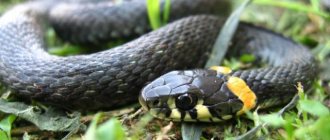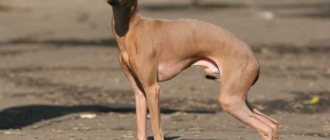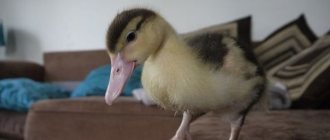Meeting a snake is a pleasant event for few people. In rare cases, reptiles bite a person in defense, however, not in all cases this poses a threat.
Most members of the snake family do not pose any danger, but there are some species with which you need to be extremely careful. Many people know that a snake bite will not cause harm, but whether this is true or not, the reader can find out by reading this article.
Common - non-venomous species of snake
Where live
The snake is a reptile and belongs to non-venomous snakes. Very often it is confused with vipers. But you should remember the differences of this animal. Differences:
- The head of the snake is oval, in the viper it has the shape of a triangle,
- The scales of the snake are shiny, the viper has a matte color,
- On the back of the head of a non-venomous animal there are yellow-orange spots,
- Snakes have round eyes, vipers have vertical pupils.
Snakes are found in fields, forests, and wetlands. They often settle near bodies of water.
Typically, the size of a snake depends on its gender, with males being smaller than females. The length reaches about a meter. The largest reptile reached three meters.
Egg laying occurs between June and July.
Snakes of this type love warm, sunny weather; they are diurnal reptiles. Quite rarely seen at night. Reptiles are excellent swimmers and can stay under water for a long time.
They eat frogs and lizards. There is no special system for catching prey. It grabs the victim by the head and legs and swallows it whole.
In winter, the snake hibernates, and in the spring it sheds. During the warm period, females begin to look for a suitable object for mating.
In nature, reptiles have quite a lot of different enemies, both birds of prey and animals. Rats attack burrows and eat newly laid eggs and small snakes.
Breeding snakes
Recommended by topic
Deer Hummingbirds Storks
Snakes reach full sexual maturity by 3-4 years of age. This means that they are now capable of reproduction and reproduction. The mating season for snakes begins in late April - early May. Females begin laying eggs in July-August. The mating season and the rituals characteristic of this moment may differ, based on the habitat habitual for the snakes.
During mating, several adults are intertwined simultaneously into one ball. Among them there may be one female and several males at once. After mating, the female is able to lay about 100 eggs. In order for the clutch to form normally, the female searches for a suitable place where the optimal level of humidity will be observed.
Reptile eggs are quite sensitive, and therefore require special conditions. Offspring may die due to cold or drying out. Therefore, snakes specifically choose a warm place with a fairly humid environment. Often such a place becomes a pile of rotten leaves, manure, etc.
Embryos begin to develop while still in the mother's body. This is how they go through the initial stages of their formation. When the female lays eggs, the offspring are already clearly visible. The incubation period is 8 weeks.
If females cannot find a sufficiently secluded space for laying eggs, several females unite with each other, organizing a kind of common storage for eggs. Such a storage facility can be located, for example, near abandoned buildings, in clearings in the forest, etc.
After the female places the eggs in the “incubator,” she abandons her offspring and no longer cares for them. After about two months, newborn snakes are born, the size of which does not exceed 15 cm. Immediately after birth, the babies try to find a suitable shelter for their future wintering. Not everyone is able to get food for themselves, which is why many newborns quickly die.
Question to the expert
What is the life expectancy of snakes?
The lifespan of snakes in the wild and in captivity is practically the same. On average, reptiles live from 19 to 23 years under favorable circumstances. The main condition for their survival is constant access to a water source.
Is it dangerous for humans?
The snake is not poisonous. A person can encounter it almost everywhere in nature, especially near water. This reptile does not show aggression on its own. When you meet her in the water, you just need to not touch her, she will simply swim away and not bite. If you drive a snake into a corner, it will become aggressive. The snake begins to hiss and take a stance. However, she almost never intends to attack and bite. Moreover, quite often this reptile simply pretends to be dead.
Snakes have their own means of protection. Their cloaca produces a yellow liquid and a rather unpleasant odor. Additionally, it has been observed that they can release feces towards the opponent in a vigorous manner.
Is a snake bite dangerous for humans?
It should be noted that this type of reptile has the same teeth as all snakes. However, there is no poison in them.
The toxic substance is present in only one species of these snakes - tiger snakes. Their poison is located in the back teeth, it is injected when swallowing the victim.
It is worth noting that there are recorded fatal cases of tiger snake bites. The poison is especially dangerous for a child.
All that is dangerous about a bite of an ordinary type is that it is not a carefully treated wound. In this case, an infection may get into it and an inflammatory process will develop, which may end unfavorably.
Natural enemies
This is a very shy species of snake. Snakes try to escape as soon as they hear strangers' footsteps. They try to escape from predators as quickly as possible.
The snake's main enemy is, first of all, man. But he also has other, natural enemies who kill the snake in order to eat it.
These include birds of prey such as gray herons and mammals such as cats, foxes and weasels. During winter fasting, even rats can eat them. Young animals are especially dangerous, since a defenseless animal is a real treat for them.
He's pretending to be dead
If a snake feels threatened in the water, it quickly moves to land. If a predator has driven her “into a corner,” she tries to change from the position of a victim to the position of an attacker. She begins to hiss and rush at the predator, thereby trying to scare away or disorient the potential threat.
When the snake does not see a way out of the situation and flight does not bring results, it pretends to be a corpse. At the same time, blood often appears from her mouth. This position allows you to disorient predators that react to movement.
If all else fails, then the snake secretes a liquid for protection. It is released through the gonads. Has a very unpleasant smell.
On very rare occasions she bites. But its bites are absolutely safe for people and pets.
Settlement with a person
These snakes rarely live near people, preferring forests, swampy areas, and fields. It is almost impossible to find it in the garden.
However, in ancient times, the presence of such a reptile near the house was considered a good omen. There are many beliefs associated with him; they were protected and were not allowed to kill. They said that he is the patron of the house and livestock, that he brings prosperity to the family. Many villagers tell how these reptiles drank milk directly from the udders of cows without causing any harm to them or causing them bites.
It is impossible to meet a snake in a modern city. Only if it is a pet. By the way, snakes tolerate such living very well, the main thing is to properly care for them. In the future, they practically cease to be afraid of humans and can even eat from their hands without biting.
Hinged teeth
Snakes' dental structures serve more than just chewing food. In the absence of limbs, they also perform the function of holding prey. Another function is protection and personal safety. Snakes can only defend themselves from enemies by bites, so the snake’s dentition is a kind of shield in the face of natural dangers.
Most teeth are completely immobile and sit tightly at the base of the sinuses of the bones, so for a long time it was believed that there were no exceptions to this rule. But in the 80s of the last century, zoologists discovered another type of teeth, which they called hinged. This name was received for the ability to amazingly bend and maintain integrity when eating and swallowing solid food.
These hinged elements of the dentition are most often small and smooth. They are securely attached to bone elements by connective tissue fibers. Their structure has two parts: a movable crown, protruding above the surface of the palate, and a fixed part, which is called the “attachment pedicle”. If necessary, the crown part can not only address the inside of the oral cavity, but also be fixed in the desired position.
Symptoms and consequences of a bite
Despite the fact that it is a safe reptile, it can still bite.
What symptoms appear?
Basically, all signs of a bite are local, since the snake is non-venomous. Signs:
- Bite marks
- Slight bleeding from the wound,
- Slight itching
- A small tumor may develop.
The snake's bite has been compared to a good cat bite. As a rule, all that is required after it is to treat the wound with an antiseptic and brilliant green. In addition, it is necessary to ensure that no dirt gets into the bite wound to avoid the development of an inflammatory process.
If you have bitten a child, you should contact a medical facility to exclude the possibility of adverse consequences. For example, the tiger snake can be dangerous for small children and allergy sufferers.
It is also necessary to go to the hospital if the bite site is very swollen, reddened, severe itching appears, or the temperature rises.
In a healthy person, the consequences of bites practically do not occur. The area where the snake's teeth entered may hurt a little. In most cases, everything passes without a trace.
Final table
The easiest way to display the differences is in a table:
| Main differences | |
| Already | Viper |
| 1. Oval, egg-shaped head. 2. Round pupils in the eyes. 3. No fangs, only small teeth. 4. White, yellow or orange spots on the “ears” located behind the head at the transition to the neck (water snakes and some other members of the family may have no marks or they may be weakly expressed). 5. “Checkerboard” pattern on the skin of the back, small spots on the belly, also arranged in an alternating order. 6. Long thin tail with a smooth transition from the body | 1. Triangular spear-shaped or arrow-shaped head. 2. Vertical “cat” pupils. 3. Noticeable venomous fangs. 4. Zigzag pattern along the spine (in some cases it may be barely noticeable due to the rich or dark base color of the skin). 5. Wide, blunt triangular tail with a sharp transition from the body. |
| Snakes that are easily confused with each other | |
| Common snake | Nikolsky's viper |
| 1. Length – from 75 to 100 centimeters, in rare cases – up to 2 meters. 2. The color is black, with noticeable bright “ears” on both sides of the head. | 1. No more than 76 centimeters in length. 2. The color is black, in young snakes it is gray-brown with a dark brown zigzag pattern along the spine. |
| Water snake | Steppe viper |
| 1. 100-150 centimeters long. 2. Olive-colored skin with dark spots located in a checkerboard pattern. 3. There are individuals with a uniform color - olive or black | 1. Body length – up to 63 centimeters. 2. Brownish-gray color with a lighter belly, dark zigzag pattern along the ridge. 3. There is a series of small dark spots along the lateral parts of the body. |
| What to do when meeting a snake 1. Do not make sudden movements. 2. Slowly, smoothly take a few steps back. 3. Do not interfere with the reptile’s attempt to escape, do not block its escape route. 4. Do not try to move the snake with a stick or other objects, especially do not touch it with your hands. 5. Snakes attack only when there is an immediate threat to themselves or when protecting a nest with eggs or young. If you let her crawl away calmly, a dangerous collision can be avoided. | |
| Actions to take when bitten by a viper | |
| What is prohibited to do | Necessary actions |
| 1. You cannot apply a tourniquet. The concentration of poison in a certain area of the body can cause necrosis. 2. You cannot cut the bite site to allow blood to flow out, much less try to suck out the poison. This is useless, since from the wound it quickly spreads through the blood vessels. 3. You should not drink alcohol, as alcohol promotes the rapid spread of poison in the body. | 1. Give the person bitten by the viper an antihistamine. 2. Anyone bitten by a viper should drink plenty of fluids. 3. Take the victim to the hospital or call an ambulance, indicating that the person was bitten by a viper. |
conclusions
Is a snake bite dangerous for humans? No, if the person is completely healthy and has no allergic reactions to anything. It is worth remembering that this snake never attacks first. If a person notices a reptile of the snake family in the forest or in the water, then he just needs to let it go quietly.
The tiger snake is dangerous, but it lives mainly in the Primorsky Territory, Japan, and the Far East. Its bite can cause a serious condition for a child or an allergic person.
There is no need to be afraid of snakes. However, a person cannot always determine whether a snake is poisonous or not. Snakes are often confused with vipers. It is necessary to remember the reptile and report it to a medical professional. In a certain situation, this will help save a person's life.
The snake's bite will not cause any particular harm to the body, but is simply unpleasant. You should carefully watch your step when walking through a forest or swampy area and do not provoke the snake. Also, don't try to catch it yourself. If you want to have such a pet at home, it is better to contact a specialist who will tell you about caring for it in order to avoid negative consequences.
No need to catch anyone by the tail
— How does a snake attack?
— When a person approaches, all snakes try to crawl away and hide. They begin to defend themselves only if they are stepped on or picked up. But during the summer, snakes molt several times. At this time, the reptile develops new scales, and because of this, the snake sees poorly. Because of this, she may not notice in time that someone has come close to her and bite her. Therefore, you need to watch your step everywhere.
— What shoes and clothes will protect you from a bite?
— You need rubber boots with high tops so that the snake does not reach your skin. Low galoshes will not work. The viper can raise its head by 15-20 centimeters when throwing. Our snakes cannot jump higher, unlike Asian snakes, such as the viper. Thick, high leather boots will also protect you from bites.
— In which summer cottages is a resident more likely to encounter a snake?
— If there is a large forest, river, or swamp nearby. Snakes live in damp places. Most often you can encounter a grass snake or a forest-steppe viper.
— What needs to be done to make the garden plot safe?
— There should be no obstructions of branches, stones, or debris on the site. There the snake can find refuge. It is also advisable to decorate the country house so that no one can crawl under it. I note that snakes like to settle in abandoned areas. And if there are people at the dacha all the time, the snakes will crawl away on their own. In general, snakes are useful. They feed on rodents and insects. They need poison first of all to poison their prey and then eat it. And secondly, for defense.
The eastern steppe viper is less common in the Voronezh region than the forest-steppe viper. Photo: From personal archive/ Mikhail Ushakov
Interesting facts about Already Ordinary
- In Central and Southern Europe, the common snake is the most common snake.
- The common snake is one of the few snakes whose range on the Scandinavian Peninsula reaches almost to the Arctic Circle.
- One day, in a clearing under an old door, over 1,200 snake eggs were found, arranged in several layers.
- Over large areas of its range, the color of the common grass snake is surprisingly variable. Even dark gray or black individuals are often found.
- People observed this snake swimming in the Bay of Biscay at a distance of 40 km
from the shore. Apparently, salt water does not harm these snakes at all.
How the common snake eats prey
The common snake catches prey after a quick attack and swallows it whole.
Its jaw is attached to the skull using movable ligaments. It grabs the prey with its jaws and then pushes it inside.
Slippery small animals, such as frogs, are easy to swallow, but in order to swallow a small mammal, it has to secrete a lot of saliva, which envelops the animal’s body and makes it slippery. It sometimes takes the snake several hours to swallow large prey.
Head:
Only the subspecies N. n.astreptophora does not have two yellowish spots on the sides of the head. The eyes are black with a round pupil.
Pattern:
Black spots are visible on brown or olive green skin.
— Habitat of the common grass snake











